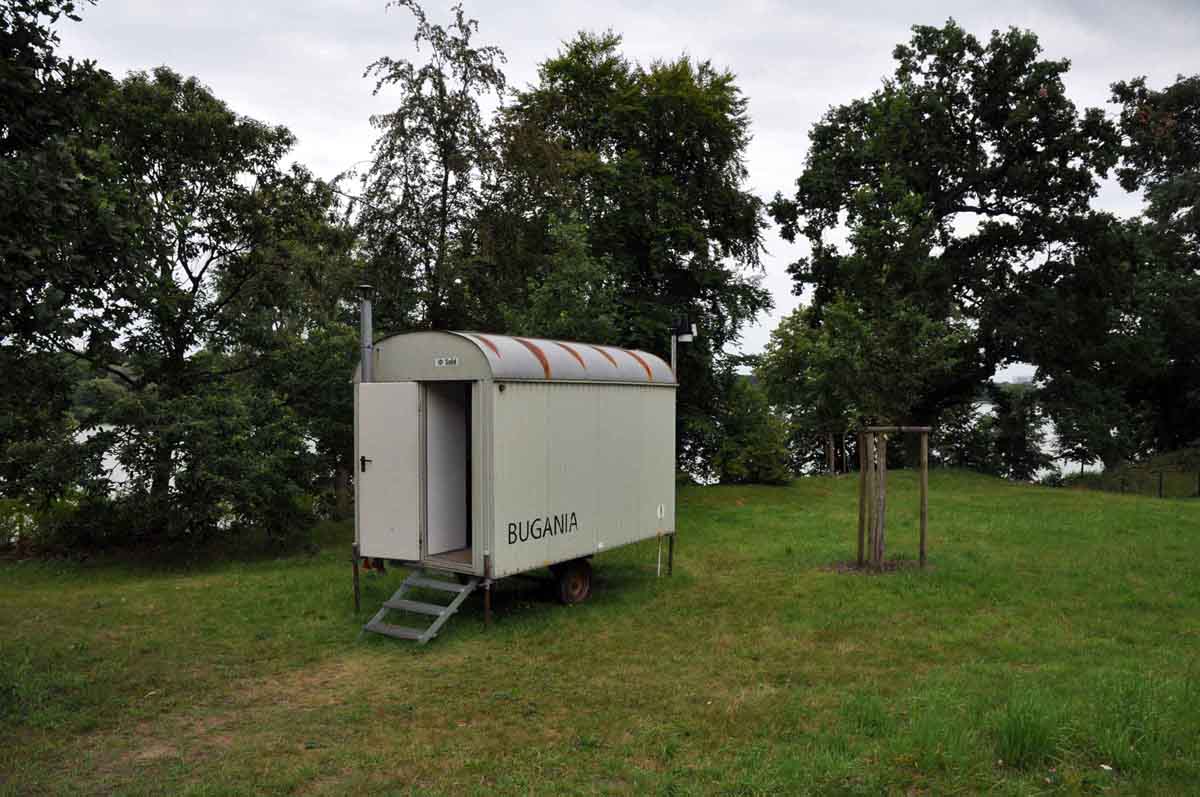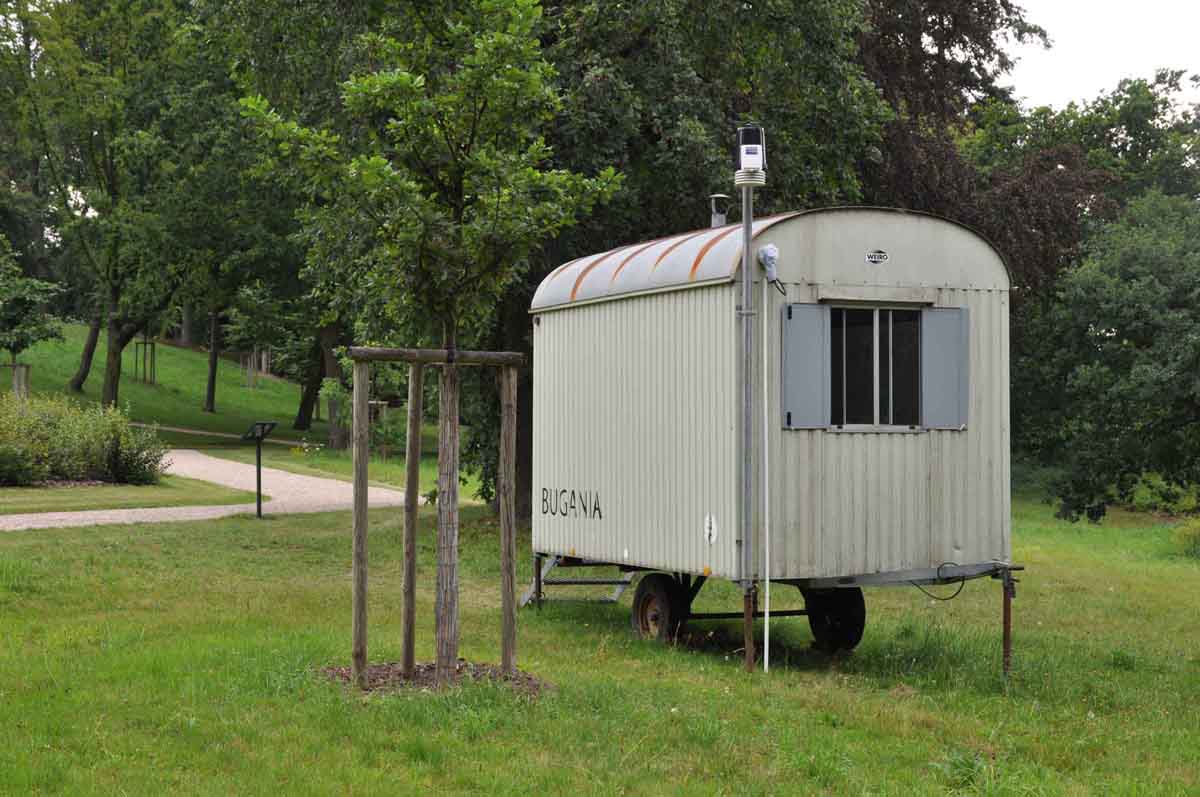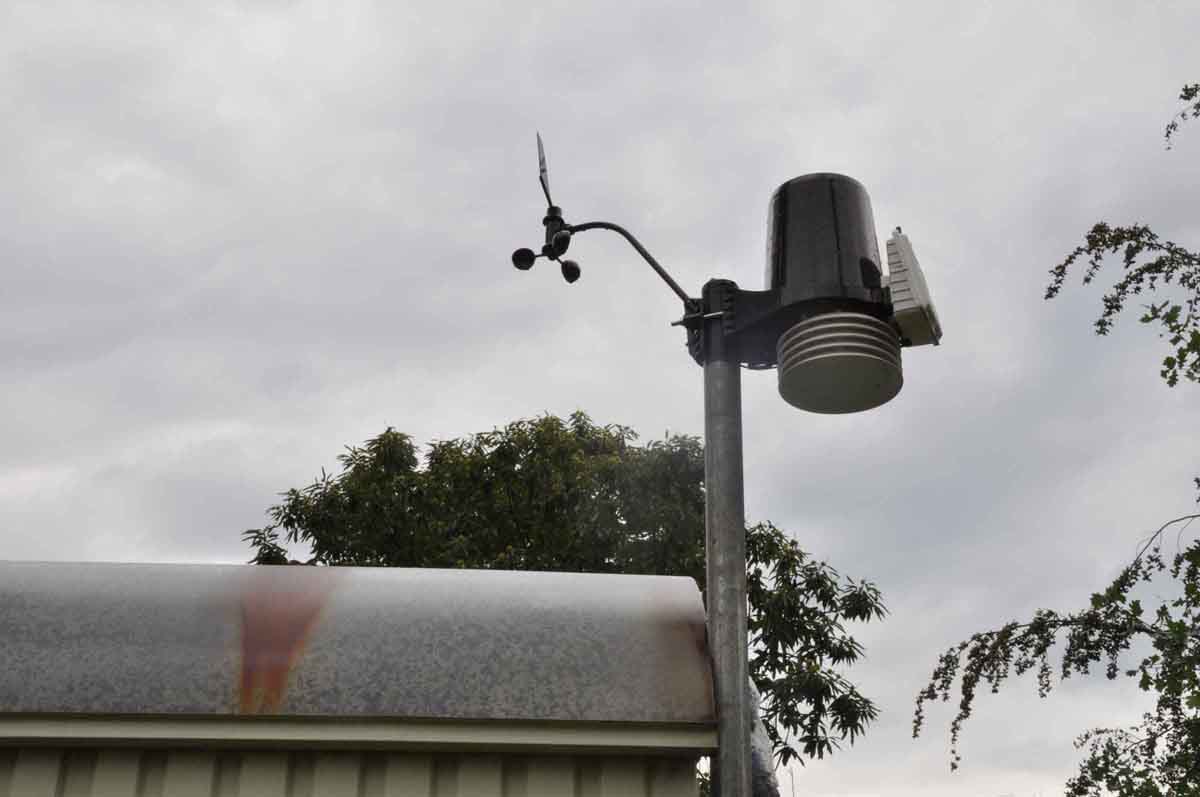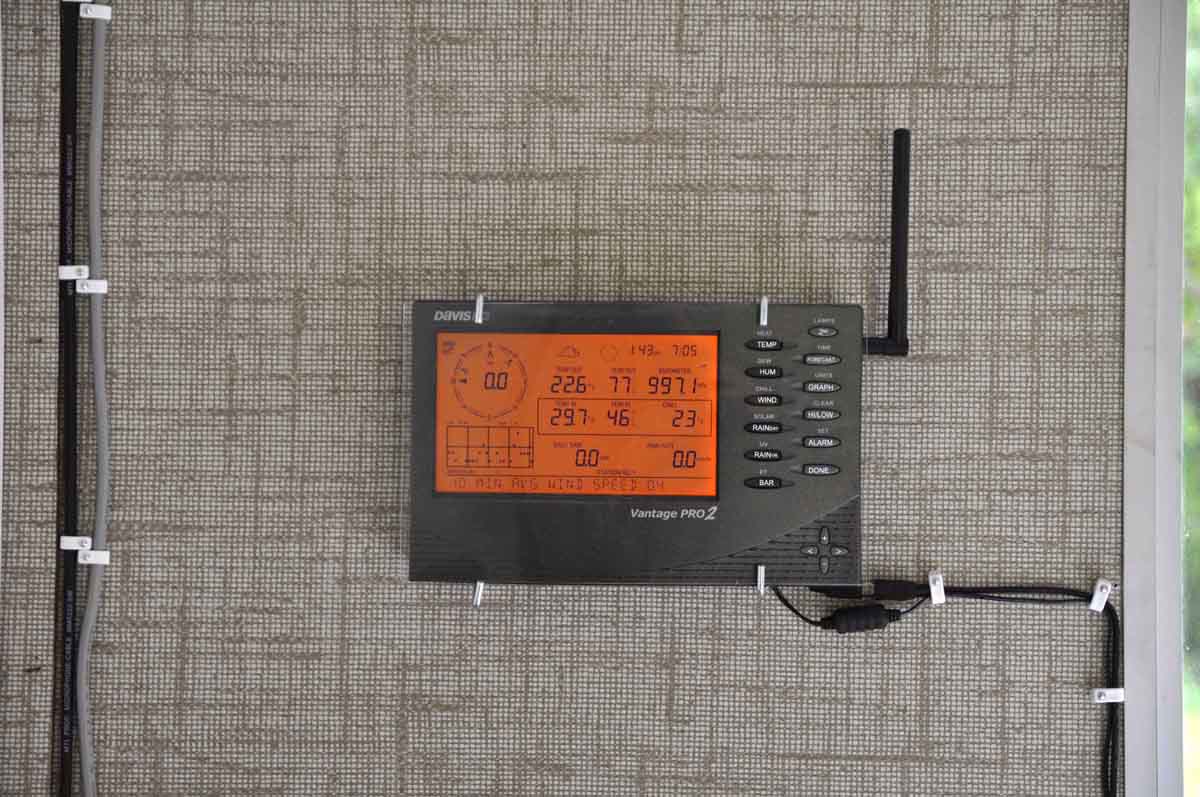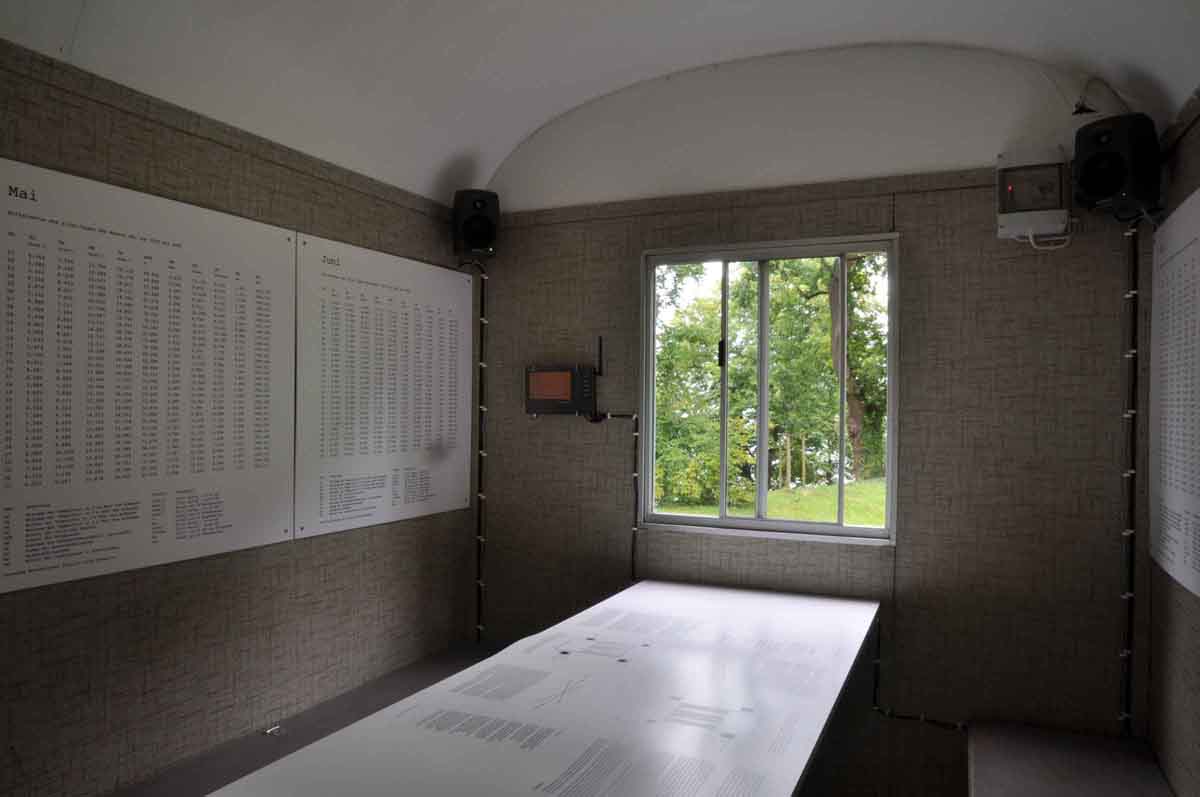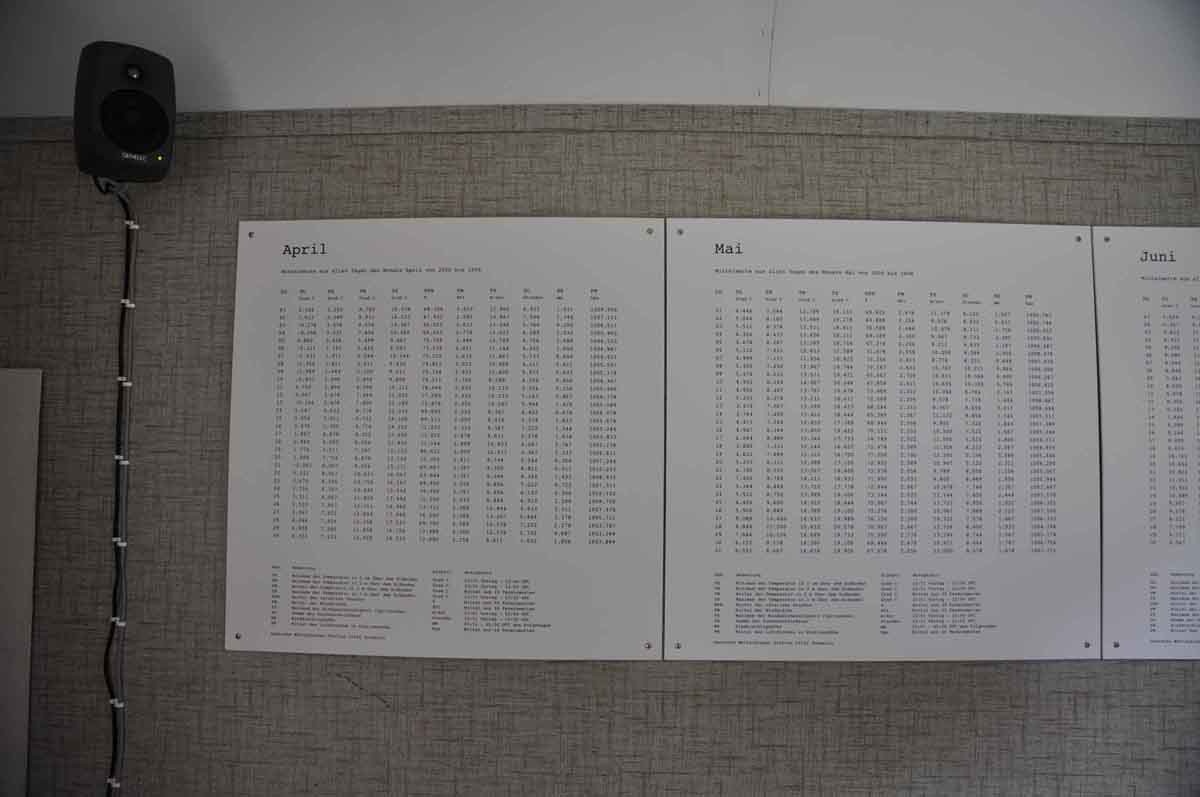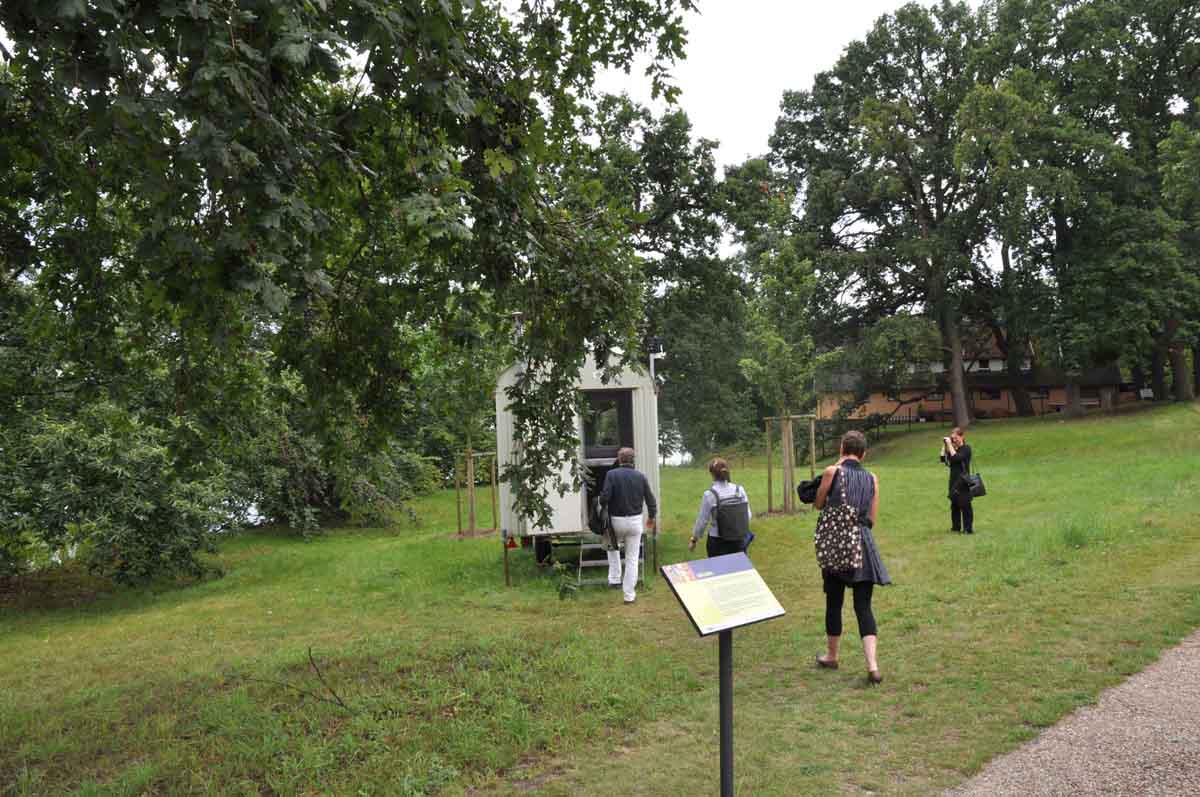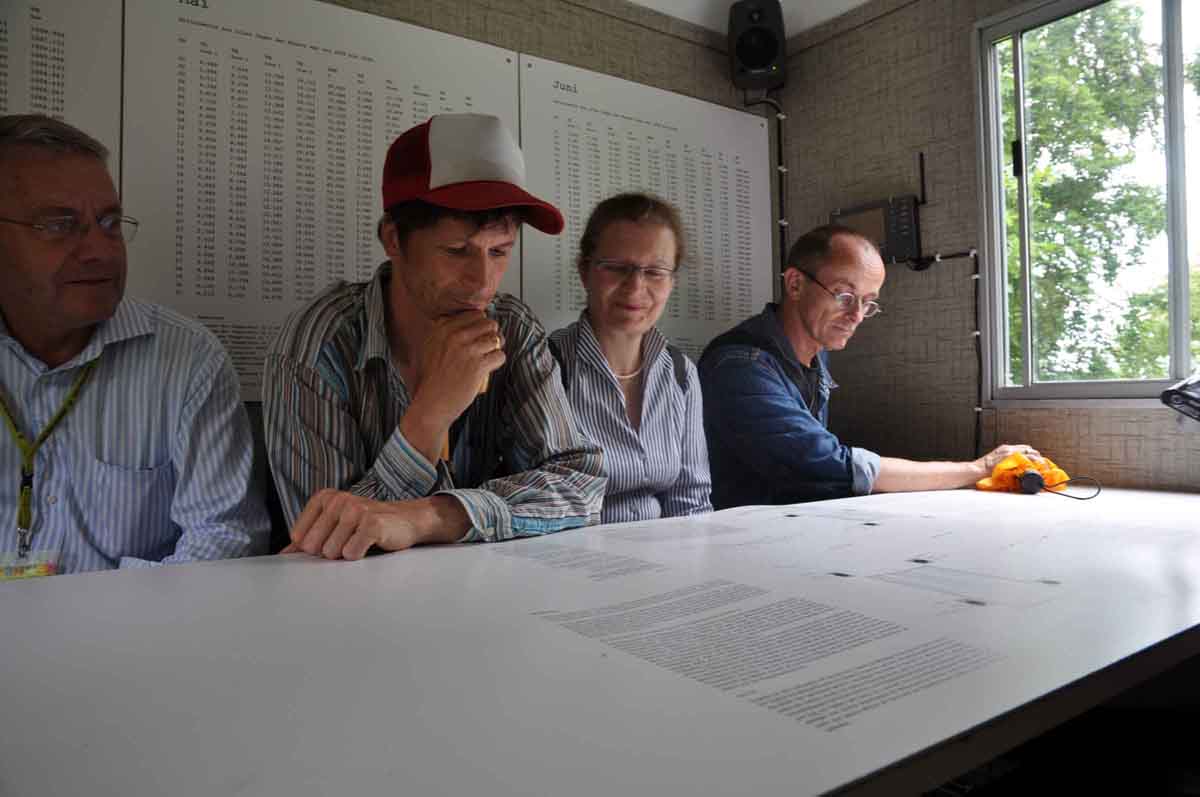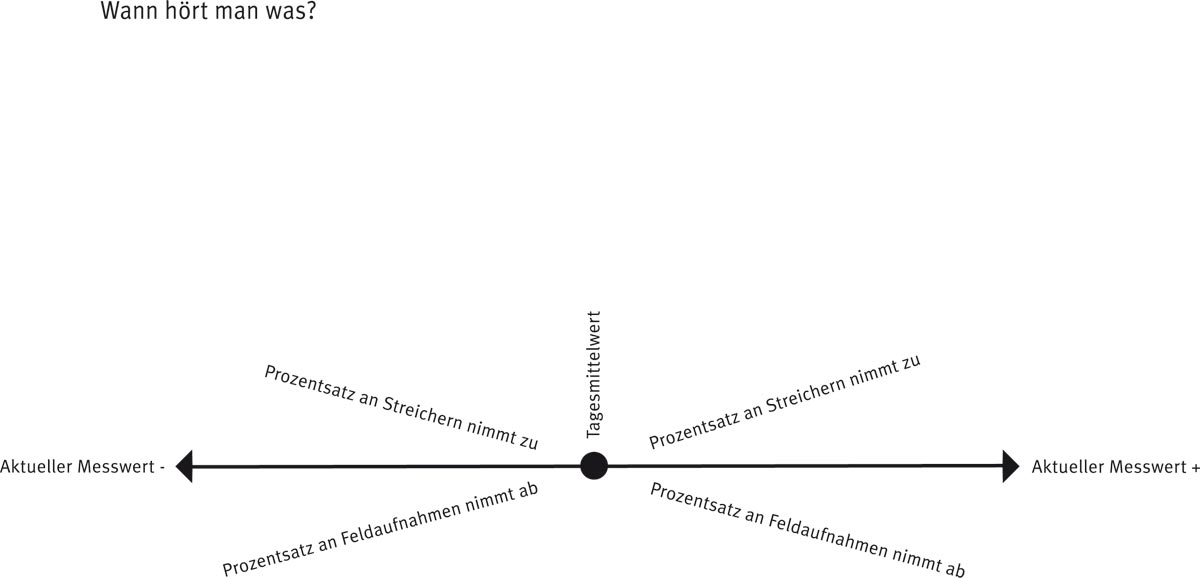Meteophon: Music at a Weather Station
Everyone is talking about the weather. In the world of music, it has also been a favourite subject for a very long time, far before the rise of program music. Starting with Vivaldi's Four Seasons or Beethoven's "By the brook" from the Pastoral Symphony, Schubert's Winterreise or Eisler's descriptions of rain, up to Gershwin's "Summertime." It would probably be possible to describe all stages of music history using compositions about the weather. As shown by Ligeti's micropolyphonic sound surface composition Athmosphères or Cage's Lecture on the Weather, the weather has also found a place in new music as well.
William Engelen's installation Meteophon eschews the old illusionistic aesthetic, instead using meteorological data as parameters for setting the course of musical events. The installation is located in a construction trailer. Each minute, a weather station placed on the roof provides current data. A display inside the construction trailer shows these data in realtime: temperature, air pressure, wind velocity, and relative humidity. Tables revealing the daily mean values of the four parameters document the data from the last ten years collected at the weather station in Berlin-Dahlem. The selection of sounds in the installation is controlled by those data. Meteophon uses a repertoire of various sounds: four field recordings of croaking frogs, of wild boar, of blowing across the necks of empty bottles, and the sound of someone eating an apple, are juxtaposed with a composition for string quartet. The instruments imitate the sounds that emerge from gardening activities. These include decidedly rhythmic structures and the frequent repetition of certain sound patterns. The current sound selection is controlled by a computer programme created by Luc Döbereiner, which compares the current values from the weather station with the mean values from the past ten years.
Inside the trailer, there are four speakers. Each speaker is assigned a certain weather parameter along with the sounds from one of the field recordings and one of the string instruments. The values of relative humidity combine the first violin and the recordings of someone eating an apple. The air pressure controls the collage of the second violin and the frog sounds. The temperature is responsible for the combination of the viola with the sound of someone blowing across the tops of empty bottles. Finally, the wind velocity determines the constellation of the cello and the wild boar sounds. As soon as the weather station supplies new values, it also modifies the sound situation. If current values agree with the daily average values from recent years, the field recordings dominate, and the strings can only be heard fragmentarily and softly. If the current value departs from the average values, the sounds from nature are replaced by the string sounds and overlaid by them. The more unusual the weather data is, the quieter the field recordings become, and the string quartet dominates the sound situation. With strong deviations from mean values, the strings also begin to sound "strange": they become louder and they transpose to different registers. The sound density also increases, while the field recordings are barely audible.
Visitors to William Engelen's installation Meteophon at some point find themselves exploring the relationships that result between the current weather, the meteorological data, and the current sound event. Suddenly, the music seems as variable as the weather. When the croaking of the frogs and the sounds of the second violin, the sound of someone of the blowing across the empty bottles and the viola overlap, then maybe a passing cloud that covers the sun is responsible, momentarily making everything cooler and darker. Yet what is intended, what takes place accidentally? Are the current values, if they differ so much from the average values, as artificial as the music for string quartet in contrast to the field recordings with the sounds of frogs, wild boars, or the apple-eating gardener? Do I have to think about climate change? What deviation am I hearing when the cello overlays the grunting of the wild boars? Can I distinguish between wind velocity and humidity by trying to listen spatially? Or is it easier to get one's bearings from correlated sounds: The wild boars signal the wind while the apple-eating sound is linked to relative humidity? And exactly how has the Berlin weather been over the last ten years in the month of September?
Sabine Sanio
